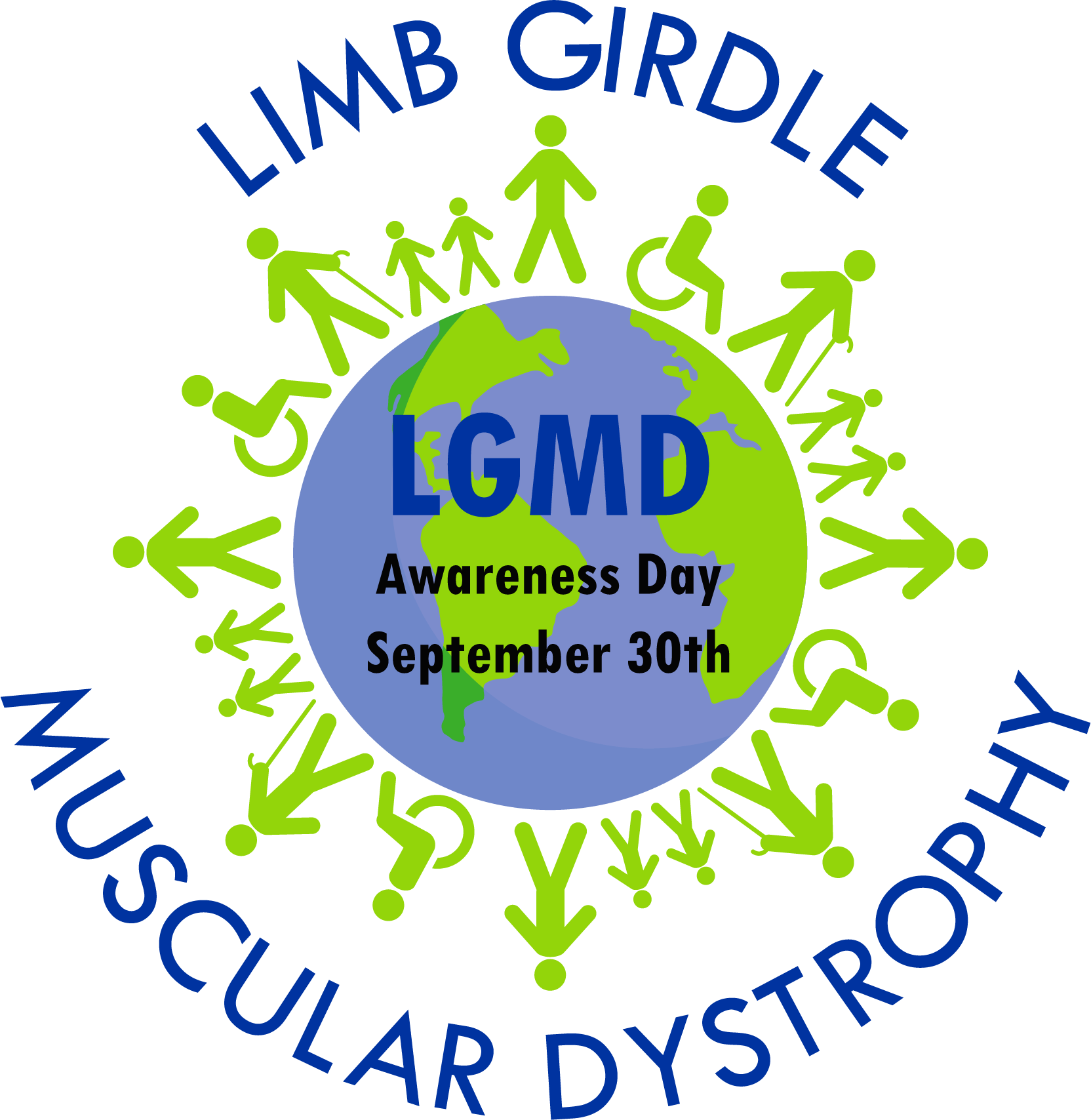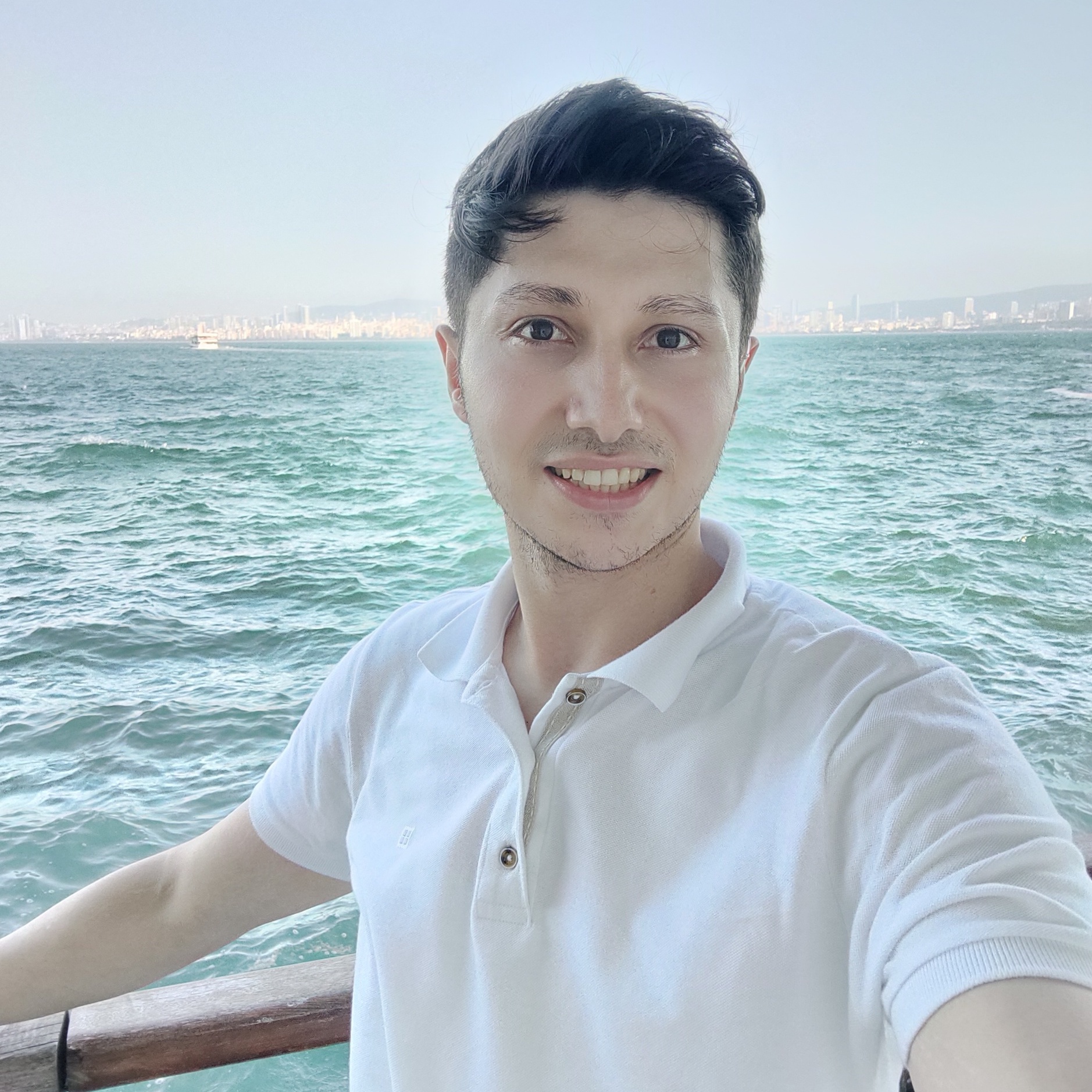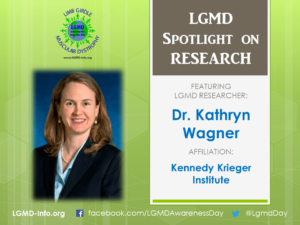LGMD RESEARCHER: Kathryn Wagner, MD, PhD
LGMD “Spotlight on Research”
LGMD RESEARCHER: Kathryn Wagner, MD, PhD
Affiliation: Kennedy Krieger Institute
Role or Position: Professor and Director of the Center for Genetic Muscle Disorders
What education and training did you have to arrive at your current position?
After I completed an MD/PhD program I did a residency in Neurology followed by fellowships in Neuromuscular and Neurogenetics. I also did a postdoctoral fellowship in Molecular Biology.
What led you to follow a career in research and in studying muscular dystrophy in particular?
My father is a prominent scientist and I always assumed that I would go into science. It was rather late in college that I decided I would like to go into medicine also. I became interested in muscular dystrophy when in graduate school I cloned (by chance) a gene, dystrobrevin, that has some similarities to dystrophin the gene that is missing in Duchenne muscular dystrophy (DMD). I learned all I could about muscular dystrophy and was fascinated by the discoveries at that time of dystrophin associated molecules implicated in other muscular dystrophies.
What topics are you studying?
I run a translational laboratory that is centered on developing novel therapeutics for muscular dystrophy. We are currently studying models of DMD, facioscapulohumeral muscular dystrophy and LGMD. In the clinic, I am studying the effects of an anti-myostatin drug produced by Pfizer in LGMD2I.
How will your work help patients? Is it more scientific in nature or might it become a treatment for LGMDs or MDs in general?
Our laboratory research on AAV and cell therapy has the potential to become treatments for LGMD and MDs in general. If the clinical trial of Pfizer’s anti-myostatin drug is successful that has the shortest path to treatment.
What would you like patients and others interested in LGMD to know about research (your own projects and about the field in general)?
Gene therapy has made tremendous progress in the past several years. It is realistic to assume that we will have systemic gene therapy trials in LGMD in the near future. In my own work, we are developing novel AAV to better home to muscle and not liver.
What inspires you to continue working in this field?
The patient population is irresistible. They strive to lead full rewarding lives despite their physical challenges.
How can patients encourage you and help your work?
Verbal encouragement is wonderful as is financial support for our research.
* * * Please LIKE, COMMENT and SHARE this post to help raise awareness of LGMD!
* * * To learn more about Limb Girdle Muscular Dystrophy (LGMD) or to read more “Spotlight Interviews”, please visit our website at https://lgmd-info.org








